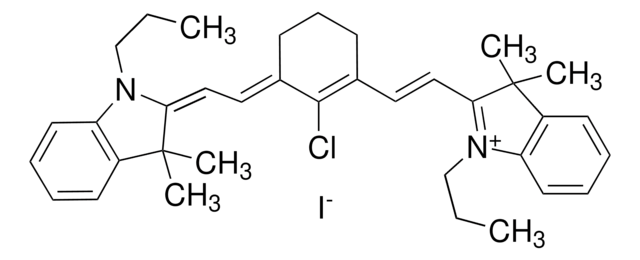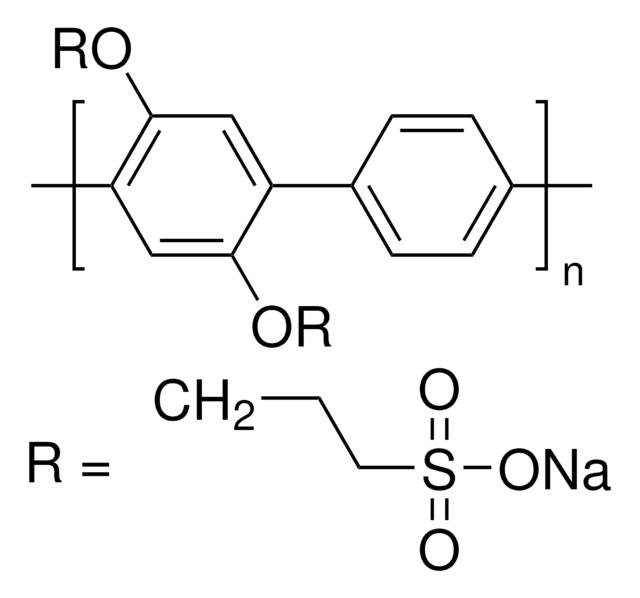추천 제품
설명
Band gap: 2.2 eV
분자량
Mn ~120,000
solubility
toluene, xylene, THF, chloroform, chlorobenzene, cyclohexanone: soluble
형광
λex 485 nm; λem 555 nm in toluene
오비탈 에너지
HOMO -5.4 eV
LUMO -3.2 eV
OPV 기기 성능
ITO/PEDOT:PSS/MDMO-PPV/PC61BM/Al
ITO/PEDOT:PSS/MDMO-PPV:PC61BM (1:4)/LiF/Al
SMILES string
COc1ccc(OCCC(C)CCCC(C)C)cc1C=C
일반 설명
애플리케이션
Storage Class Code
11 - Combustible Solids
WGK
WGK 3
Flash Point (°F)
Not applicable
Flash Point (°C)
Not applicable
개인 보호 장비
Eyeshields, Gloves, type N95 (US)
이미 열람한 고객
문서
New conducting and semiconducting polymers for plastic electronics
The union of distinct scientific disciplines is revealing the leading edge of Nanotechnology.
The development of high-performance conjugated organic molecules and polymers has received widespread attention in industrial and academic research.
Professor Chen (Nankai University, China) and his team explain the strategies behind their recent record-breaking organic solar cells, reaching a power conversion efficiency of 17.3%.
자사의 과학자팀은 생명 과학, 재료 과학, 화학 합성, 크로마토그래피, 분석 및 기타 많은 영역을 포함한 모든 과학 분야에 경험이 있습니다..
고객지원팀으로 연락바랍니다.![Poly[2-methoxy-5-(2-ethylhexyloxy)-1,4-phenylenevinylene] average Mn 40,000-70,000](/deepweb/assets/sigmaaldrich/product/structures/344/488/b8f8179d-3970-4deb-a754-adda88cdb36f/640/b8f8179d-3970-4deb-a754-adda88cdb36f.png)


![Poly[5-methoxy-2-(3-sulfopropoxy)-1,4-phenylenevinylene] potassium salt solution 0.25 wt. % in H2O](/deepweb/assets/sigmaaldrich/product/structures/111/584/9e24dfe5-3cb6-4bd8-8bc6-cbe82c1b88cd/640/9e24dfe5-3cb6-4bd8-8bc6-cbe82c1b88cd.png)


![Poly[(m-phenylenevinylene)-co-(2,5-dioctoxy-p-phenylenevinylene)] light-emitting polymer, predominantly trans](/deepweb/assets/sigmaaldrich/product/structures/249/040/9442b889-4fa0-4b4a-b424-cff0769a5ef2/640/9442b889-4fa0-4b4a-b424-cff0769a5ef2.png)


